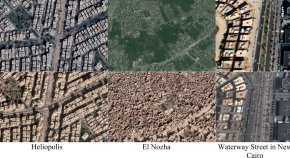
Collection
Earth and Environmental Sciences: Applied Engineering to Mitigate the Impacts of Climate Change on the Built and Natural Environments
- Submission status
- Open
- Open for submission from
- 29 May 2023
- Submission deadline
- 30 June 2024
The built environment comprises buildings, roads, rails, bridges, tunnels and all structures and systems designed to live, work, and travel. The built environment is an asset of great value that must be preserved and continues to grow in harmony with nature in the coming decades. Climate change is a reality through multiple events: floodings, sea-level rise, heat waves, droughts, and storms are some examples. These disasters have severe impacts on the built and natural environments. The Sustainable Development Goals (SDGs) of the United Nations call for urgent actions for global Earth protection. Engineering has committed to the noble mission of achieving the SDGs. Engineering can contribute significantly to protecting the built and natural environments against the impacts of climate change. This collection intends to provide scientific publications that describe technological and sustainable solutions to benefit the built and natural environments when exposed to climate change events.
Editors
-
José Neves
Dr. José Neves, Professor, University of Lisbon, Portugal. He is a Researcher at the CERIS Research Unit – Civil Engineering Research and Innovation for Sustainability. His main scientific interest is transportation infrastructure systems. Professor Neves is a member of the Academy of Pavement Science and Engineering (APSE), in USA, and of the TC 202 – Transportation Geotechnics – of the International Society for Soil Mechanics and Geotechnical Engineering (ISSMGE).
Articles (2 in this collection)
-

-
Optimizing energy efficiency and thermal comfort of green envelope applications in hot arid climate
Authors
- Yomna Lotfi
- MennatAllah Hassan
- Content type: Research
- Open Access
- Published: 13 February 2024
- Article: 66



